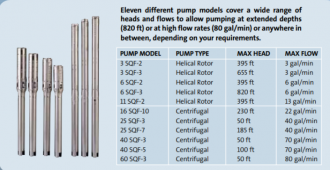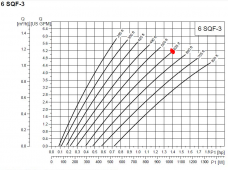hicktown21
New Member
- Joined
- Sep 10, 2022
- Messages
- 12
Trying to be as cost conscious as I can and I have been speaking to off-grid solar companies and it seems all of them want me to build a huge production plant. I am a complete novice at all the lingo but getting better by watching videos, reading and viewing comments here in this forum.
Based on the info below and the pump tech information can anyone point me in the right direction. I am ready to purchase and install once I have all the components. I will be going with a lithium battery set-up for possible emergencies.
The well pump is my biggest energy (start-up from reading here) pull and I will only use it during the long AZ sun days. I don't see running the well pump at night unless an emergency or I messed up the scheduling. The water is being pumped up to very large holding tanks and the pump is only rated at 7gpm (see pump tech worksheet)
Listed the items below and usage expected.
** 2HP well pump (7gpm) - see attachment for specifications (the pump will only be used during daylight hours, run 2x a month and runs usually for 5 hours) no other appliances will be ran during this time.
** Clothes washer (runs a few times a month when in use)
** String lights to be used only during the night will LED.
** One ceiling fan (not on all the time)
** ½ hp RV pump to run water to 3 shower locations (runs a few times a month when in use)
** A few cell phone charging stations/plug ins
Thank you all..!!
Based on the info below and the pump tech information can anyone point me in the right direction. I am ready to purchase and install once I have all the components. I will be going with a lithium battery set-up for possible emergencies.
The well pump is my biggest energy (start-up from reading here) pull and I will only use it during the long AZ sun days. I don't see running the well pump at night unless an emergency or I messed up the scheduling. The water is being pumped up to very large holding tanks and the pump is only rated at 7gpm (see pump tech worksheet)
Listed the items below and usage expected.
** 2HP well pump (7gpm) - see attachment for specifications (the pump will only be used during daylight hours, run 2x a month and runs usually for 5 hours) no other appliances will be ran during this time.
** Clothes washer (runs a few times a month when in use)
** String lights to be used only during the night will LED.
** One ceiling fan (not on all the time)
** ½ hp RV pump to run water to 3 shower locations (runs a few times a month when in use)
** A few cell phone charging stations/plug ins
Thank you all..!!





